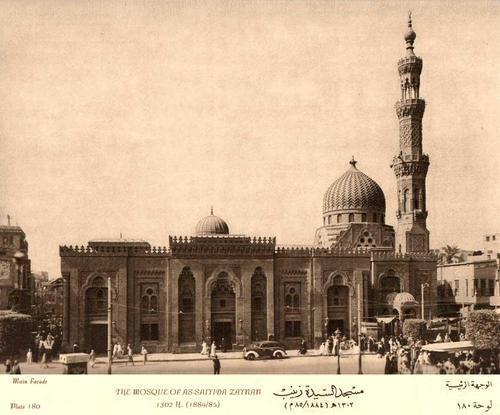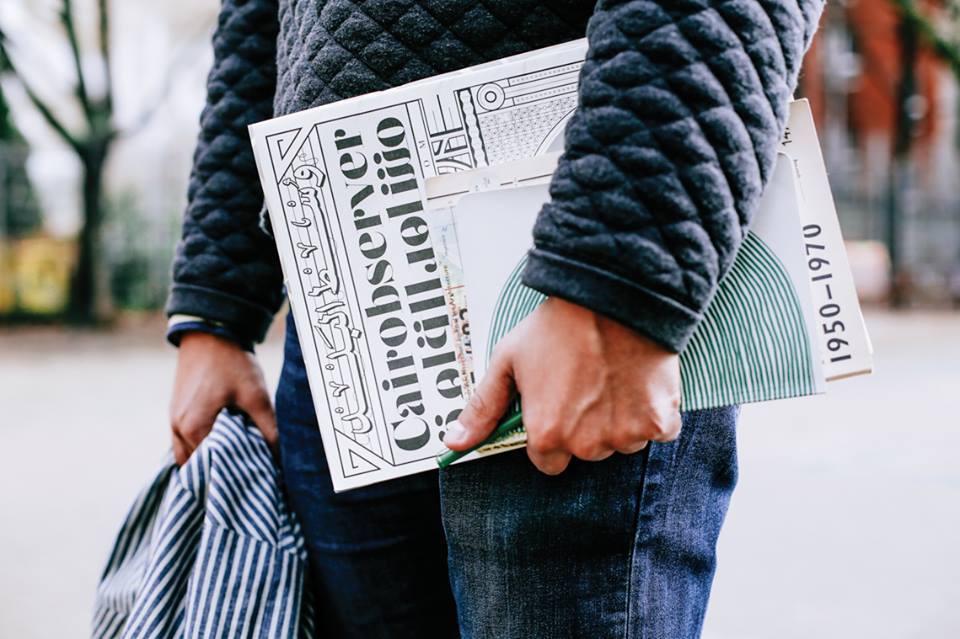Cairo’s Patron Saint: Sayeda Zainab

Throughout Egypt are hundreds of shrines belonging to historic figures many of whom have become destinations for visitation and pilgrimage by various religious orders. Some of these “saints” have become the loci of the cities where they are located as in the case with Sidi Badawi in Tanta, Sidi Mursi Abul Abbas in Alexandria or Sayeda Zainab in Cairo. This means that over the centuries the shrines developed into significant landmarks with impressive mosque structures that became iconic in each of those cities. Cairo is dotted with many tombs and mausoleums belonging to various historic religious figures, however Sayeda Zainab is arguably Cairo’s patron saint. The grand daughter of the prophet Mohamed is known to have been buried at the spot where the modern-day mosque stands and for the past millennium it has been a site of pilgrimage for Egyptians and Muslims in general. To mark this venerable saint, various rulers of Egypt have built, rebuilt, renovated, expanded mosques at this location.
Architecturally, the most notable mosques built in honor of Sayeda Zainab started during Ottoman rule of Egypt when in 1549 Ali Pasha al-Wazir built a notable structure which was rebuilt in 1761 and in 1798 a renovation was interrupted by the French invasion of Egypt. The interrupted renovation was later completed during Mohamed Ali’s rule and ever since the ruling dynastic family of Mohamed Ali paid particular attention to Sayeda Zainab along with other key mosques around Cairo and Egypt. Another renovation took place in 1859 during which two additional shrines were added for Sheikhs Atrees and Aydroos (عتريس و عيدروس). The current structure however is a modern one dating to 1884 and was ordered by Khedive Tawfiq.
Important to remember that Khedive Tawfiq was the ruler of Egypt who also founded the Comite de Conservation des Monuments de l'Art Arabe for the documentation and preservation of Cairo’s historic monuments (mainly Coptic and Islamic). The new mosque of Sayeda Zainab was built during the same time as several key mosques of historic and religious significance around the city particularly those belonging to saints such as the mosque al-Hussein. The architecture of both Al-Hussein and Sayeda Zainab is a late 19th century academic rendition of Mamluk architecture. It must be noted that this also coincides with the construction of Egypt’s final grand mosque, Al-Rifai which was also designed in a neo-Mamluk style infused with Italian and other eclectic details (a reflection of the diverse team of architects and designers working as part of the Comite). The re-appropriation of the Mamluk style was an aesthetic reflection of how members of the royal family saw themselves vis-a-vis their Ottoman heritage and the Egyptian context which they ruled.
In 1898 when the Khalig al-Masri was filled (the water channel that ran through the old town where today’s Port Said Street is now located) the square in front of the mosque was created and was named after the patron saint of Cairo. Since the mid-19th century, this part of Cairo was home to many important families and institutions such as the Ministry of Education and the first National Library. Ali Mubarak, the planner of Cairo’s 19th century urban expansion known today as “downtown” lived in the Sayeda Zainab district. Also famous 19th century Azhar scholar Mohamed Abdu lived here. The area was also home to working class families and it was where the 1919 revolution grew and the square outside the Sayeda Zainab mosque was a place of protest during those events. The area continues to be one of Cairo’s most vibrant working class districts. At the beginning of the 20th century the district and area surrounding the mosque and the square was home to nine cinemas nearly all of which have been out of business for over a decade.
The mosque was expanded once again during the reign of King Farouk and reopened in 1942. After it was damaged during the 1992 earthquake Sayeda Zainab underwent yet another renovation in 1999 costing 30 million pounds. The mosque is owned and managed by the ministry of religious endowments (Awqaf) and despite its rich history and architectural quality it is NOT a listed monument. Only 500 of Cairo’s Islamic buildings (numbered in the thousands) are listed by the ministry of antiquities (perhaps an indication of the serious problems of how that ministry is managed).
The mosque continues to be a focal point for this community and it is the site of the annual feast dedicated to Sayeda Zainab which celebrates her birth. The coffee shops around the square and the mosque were places where some of Egypt’s most notable writers and journalists met and exchanged ideas. This is a district with deep historical roots with a monument that is not only significant for this part of the city but for all of Cairo. If there is any serious political will to work with the community to develop this district around Sayeda Zainab there is a lot of potential to be realized.
The mosque is open and is fully functional. If you visit make sure to visit the silver shrine inside.
7 notes
cynicalidealism liked this
urbanalysis reblogged this from cairobserver
languidsoul reblogged this from malaka-badr
 malaka-badr reblogged this from cairobserver
malaka-badr reblogged this from cairobserver  malaka-badr liked this
malaka-badr liked this cairobserver posted this

